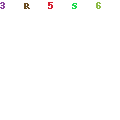
Thursday’s Therapy
Violent Death: Restorative Retelling
Part Five
Distinctions Between
Violent Death and Child-Loss
As I discussed the findings last week of Dr. Edward K. Rynearson, (a psychiatrist and a victim of his wife’s violent death) in his book, Retelling Violent Death:
Death creates irreversible loss of our loved one. Such permanent separation causes Separation Distress. Such sudden and unforeseen loss of our child through death, a complete separation, creates a longing and searching for reunion with our lost child to relieve our grief and distress.
Dr. Rynearson of course does not separate out child-loss from other losses of loved ones. He generally studies and treats victims of violent loss.
In describing violent loss, Rynearson distinguishes "Separation Distress" from “Trauma Distress”:
Separation Distress is the distress that happens to loved ones of a deceased victim because we are irreversibly separated from this person we love. Such abrupt and permanent loss leaves the grieving loved ones intent on establishing a psychological and physical connection with the living presence, and with the longing for an embracing reunion with the loved one's vitality.
Trauma Distress refers to the added distress we feel because of the violent dying of our loved one due to the violent way in which s/he died.
Dr. Rynearson considers Trauma Distress to be the more powerful and intense of the two distresses, yet he admits Separation Distress is much more complex to walk through as we must reprocess all of our emotional connection with our deceased loved one. (A very arduous, tedious, and emotionally intense process indeed.)
***
I think I would argue with Dr. Rynearson when he says that Trauma Distress is "more powerful and intense" than Separation Distress.
Trauma Stress is induced in me by the violence that my child had to undergo in the car crash on that fateful night that brought her death about. Yes, her violent death is powerful and very disturbing in many ways! It can bring me to my knees in a heart-beat and often does.
However, to me the more powerful impact on me long-term, is that each and every day for the rest of my life, I will be forced to be separate from my precious child, no matter how she died.
Both types of distress are very difficult and powerful, and will crop up to haunt the surviving parent at any given time, each capable of taking you back to square one in your pain, anguish and loss.
We have to remember as we study his very helpful book about the restorative retelling of violent death, that Rynearson is describing ALL types of violent deaths of loved ones, while
We are dealing with
the severest form of grief possible...
the death of one’s own child.
***
Rynearson calls “possession” the state of being so consumed by any aspect(s) of grief, that one loses the “governance” of one’s life – in other words, is so “possessed” by grief that the griever becomes debilitated in returning to life’s pre-death normalcy.
***
{Wouldn’t you say “Possession” in these terms is the very definition of the effects of child-loss grief?!}
***
To reiterate, these are the types of “possessions” that Rynearson cites as events or dynamics that could heighten a person’s risk factor as s/he goes through grief:
- reenactment - playing over and over in our minds the possible features of the loved one’s violent death,
- reuniting - doing whatever is necessary to find and reestablish an idealized attachment to one’s child, or otherwise remaining inconsolable,
- remorse - feeling guilty or responsible that we could not stop the death,
- retaliation - a cold rage and strong desire for revenge for the death, and
- overprotection - going into high alert to prevent (what-feels-like) the impending loss of any other family members after we so helplessly have lost our deceased loved one.
Dr. Rynearson does acknowledge that (some) parents in their child loss are different from other grievers:
"A significant minority of family members, perhaps 30% of parents (Murphy, 1999), suffer persistent thoughts of reenactment, remorse, retaliation, and overprotection, for years instead of months.”
***
Here again, I would beg to differ with the doctor...
Depending on the intensity of the relationship one has with his/her child, I would bet that MOST parents suffer fairly persistent thoughts of reenactment, remorse, retaliation, and/or overprotection, for years instead of months.
The Loss of a loved one is
quite different from
the Loss of one’s own child.
In many ways, comparing the two types of losses – Loss of a family member versus the Loss of a child is, in my opinion, like comparing apples and oranges; they belong to completely different types and severities of loss.
When one has not lost a child (which I believe is true for the above professionals), I believe it is almost unimaginable for anyone but a child-loss parent to even begin to understand the kinds of devastation that are wreaked by such a loss as child-loss.
So unless a professional has actually experienced such a tragic, disastrous loss as child-loss, perhaps s/he should not even think they could capture the severity of child-loss grief anywhere near accurately.
***
I do appreciate however, the contributions Dr. Rynearson is making to help us better understand the particular stressors that come with encountering any violent death of a loved one. These concepts offer vital tools to helping us better grapple with some of the "crazy-making" ruminations that are also part and parcel of child-loss grief.













































No comments:
Post a Comment